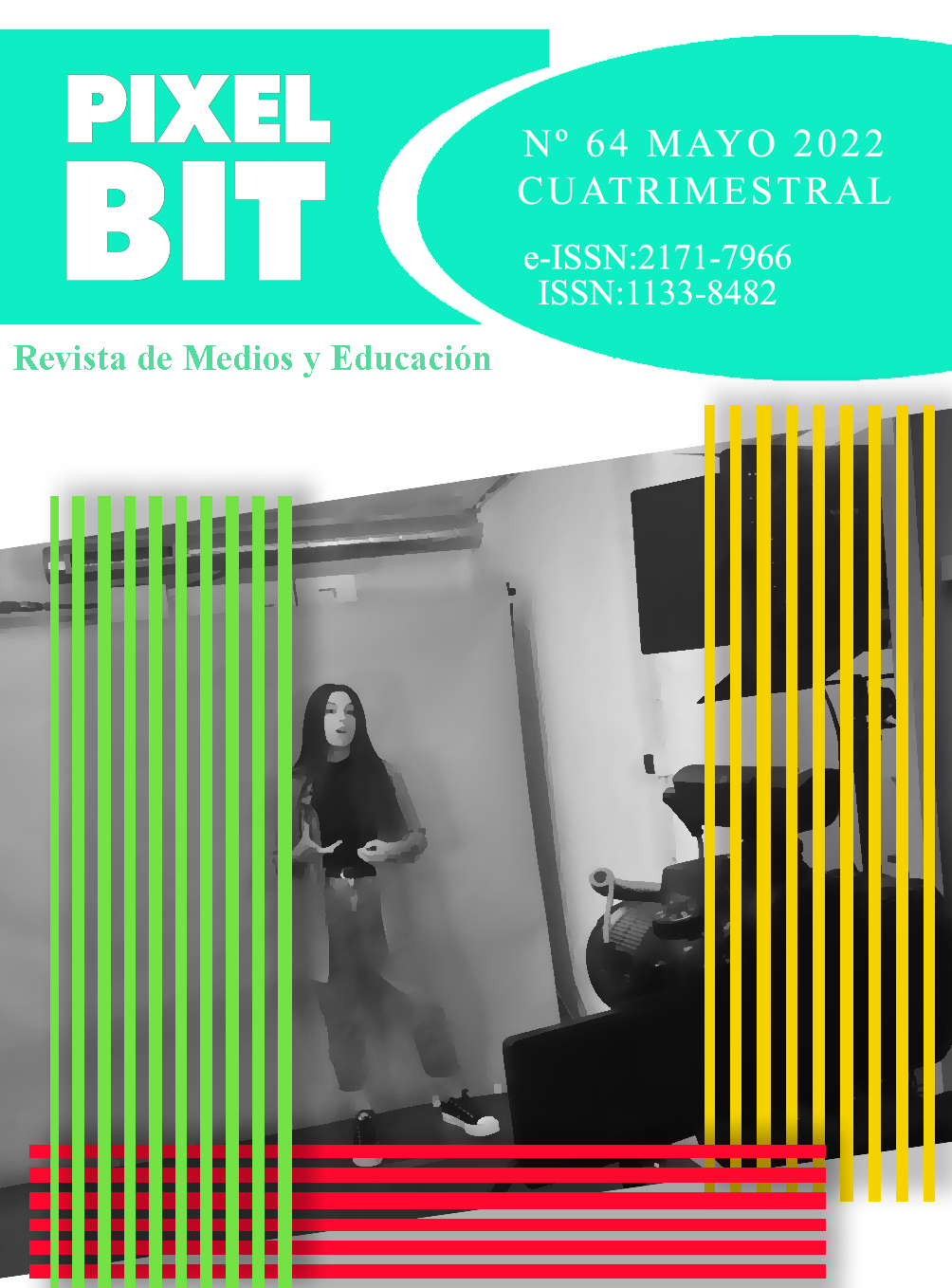Abstract
Cloud computing technology offers great possibilities in contexts with infrastructural difficulties and can provide a bridge to help overcome the existing gap in European rural schools due to their lack of resources, isolation, infrastructural limitations and technological support. The purpose of this study was to design, implement and evaluate an environment for flexible teaching and collaboration in rural schools in Europe based on cloud computing technology and was carried out in the framework of a European research project (RuralSchoolCloud). For this purpose, a design-based research (DBR) was conducted in 14 rural schools in five European countries (Denmark, Spain, UK, Italy, Greece). The study sample consisted of a total of 560 students and 72 teachers of kindergarten, primary and compulsory secondary education who answered the "Questionnaire for the analysis of the cloud computing RSC educational environment". Overall, the results show that the RSC educational environment proved to be a powerful tool to provide a functional and usable technical educational resource for EU rural schools, allowing temporal and spatial flexibility in teacher and student interactions, and providing a tool adapted to the different characteristics, needs and interests of rural schools.
References
Álvarez-Álvarez, C., & García-Prieto, F. J. (2021). Brecha digital y nuevas formas académicas en la escuela rural española durante el confinamiento. Educar, 57(2), 397-411. https://doi.org/10.5565/rev/educar.1250
Assaf-Silva, N. A. J. (2020). El futuro de la interacción aprendiz- interfaz, una visión desde la tecnología educativa. Revista de Innovación Educativa, 12(2), 150-165.
Bayonet, L. E., & Patiño, A. D. (2014). Mobile Cloud aplicado en las Escuelas Rurales de Republica Dominicana. http://bit.ly/3Ez0K8b
Carr, N. (2009). The big switch: Rewiring the world, from Edison to Google. WW Norton & Company.
Carrete-Marín, N., & Domingo-Peñafiel, L. (2021). Los recursos tecnológicos en las aulas multigrado de la escuela rural: Una revisión sistemática. Revista Brasileira de Educação do Campo, 6, 13452-13452.
CloudWATCH (s.f.) iPad school Sint-Pieters – Sint-Jozef Blankenberge. CloudWATCH. http://bit.ly/3xTvS15
Comisión Europea, Dirección General de Educación, Juventud, Deporte y Cultura (Ed.) (2019). Competencias clave para el aprendizaje permanente. Oficina de Publicaciones. http://bit.ly/37v2iUD
Dinesha, H. A., & Agrawal, K. (2011). Advanced Technologies and Tools for Indian Rural School Education System. International Journal of Computer Applications, 36(10), 54–60.
Echazarra, A., & Radinger, T. (2019). Learning in Rural Schools: Insights from PISA, TALIS and the literature. OECD Education Working Paper, 196. https://doi.org/10.1787/8b1a5cb9-en
Jonassen, D. H., Carr, C., & Yueh, H.-P. (1998). Computers as mindtools for engaging learners in critical thinking. TechTrends, 43(2), 24-32. https://doi.org/10.1007/BF02818172
Kalagiakos, P., & Karampelas, P. (2011). Cloud computing learning. 2011 (5th International Conference on Application of Information and Communication Technologies, AICT - Conferencia). IEEE, Bakú, Azerbaiyán. https://doi.org/10.1109/ICAICT.2011.6110925
Katz, R. N. (2008). The Tower and The Cloud: Higher Education in the Age of Cloud Computing. EDUCAUSE. http://bit.ly/38VpgEJ
Kidwai, H., Burnette, D., Rao, S., Nath, S., Bajaj, M., & Bajpai, N. (2013). In-service Teacher Training for Public Primary Schools in Rural India, Working Paper Series 12, 1-50. https://doi.org/10.7916/D8HT2PRV
Koutsopoulos, K. C., & Kotsanis, Y. C. (2014). School on Cloud: Towards a paradigm shift. Themes in Science & Technology Education, 7(1), 47-62.
LSMS (s. f.). Moodle offline. http://bit.ly/3EsoIC2
Magro, C. (2015). Educación conectada en tiempos de redes. Ministerio de Educación.
Mckenney, S., & Reeves, T. (2013). Educational Design Research. En Spector J., Merrill M., Elen J., Bishop M. (eds). Handbook of Research on Educational Communications and Technology (pp. 131-140). Springer. https://doi.org/10.1007/978-1-4614-3185-5_11
Mehta, D., Saxena, S., Saxena, S., & Kohli, V. R. (2015). Promoting Rural Education through Cloud Computing-An Analysis. http://bit.ly/3MbU8iI
Mell, P., & Grance, T. (2011). The NIST Definition of Cloud Computing Recommendations of the National Institute of Standards and Technology. NIST Special Publication, 800,145.
Nielsen, J. (1995). How to conduct a heuristic evaluation. Nielsen Norman Group, 1(1), 8. http://bit.ly/3KYWu4m
Qasem, YA, Abdullah, R., Jusoh, YY, Atan, R. y Asadi, S. (2019). Adopción de la computación en la nube en instituciones de educación superior: una revisión sistemática. Acceso IEEE, 7, 63722-63744.
Rodríguez-Malmierca, M.J. (2022). La integración de la tecnología de computación en la nube en el proceso de enseñanza-aprendizaje (Tesis doctoral, Universidad de Santiago de Compostela). Repositorio Minerva http://minerva.usc.es/xmlui/handle/10347/27569
Salinas, J. (2013). La computación en la nube y sus posibilidades para la formación. En Aguaded, J.I., & Cabero, J. (Coords.), Tecnologías y medios para la educación en la e-sociedad (pp.137-157). Alianza editorial.
Sasikala, S., & Prema, S. (2010). Massive Centralized Cloud Computing (MCCC) Exploration in Higher Education. International Conference on e-resources in higher education: Issues, Developments, Opportunities and Challenges. (Conferencia). Bharathidasan University, Tiruchirappalli, India. http://bit.ly/3JXB0Do
Sharma, M., Gupta, R., & Acharya, P. (2020). Factors influencing cloud computing adoption for higher educational institutes in India: a fuzzy AHP approach. International Journal of Information Technology and Management, 19(2-3), 126-150.
Sukanesh, R., & Kanmani, A. (2014). Cloud computing in the field of rural education. Applied Mechanics and Materials, 573, 593-599. https://doi.org/10.4028/www.scientific.net/AMM.573.593
Vaidya, S., Shah, N., Virani, K., & Devadkar, K. (2020). A survey: Mobile cloud computing in education. [Conference]. (IEEE) 5th International Conference on Communication and Electronics Systems (ICCES). http://bit.ly/3L5RomR
Wang, F., & Hannafin, M. J. (2005). Design-based research and technology-enhanced learning environments. Educational Technology Research and Development, 53(4), pp. 5-23. https://doi.org/10.1007/BF02504682
Wang, X., & Wong, B. (2019). Bridging knowledge divides utilizing cloud computing learning resources in underfunded schools: Investigating the determinants. Journal of Educational Computing Research, 57(3), 591-617.
Zhang, Z., & Zhang, X. (2010). A load balancing mechanism based on ant colony and complex network theory in open cloud computing federation. (Conferencia). ICIMA, Wuhan, China de https://doi.org/10.1109/ICINDMA.2010.5538385

This work is licensed under a Creative Commons Attribution-NonCommercial-NoDerivatives 4.0 International License.
Copyright (c) 2022 Pixel-Bit. Media and Education Journal

